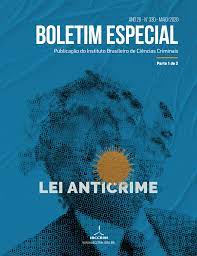The Restorative Justice and the Non-Prosecution Agreement
Views: 1180Keywords:
Restorative Justice, Non-Prosecution Agreement, Accusatory SystemAbstract
We will discuss the relationship between two institutes with recently defined application in the Brazilian Judicial System. On the one hand, Restorative Justice (RJ), which has already been applied abroad and in Brazil, but still pending the literal inclusion in the CCP. On the other hand, the Non-Prosecution Agreement (NPA) defined in the recently article 28-A of the CCP. We seek, through literature review, to identify the possibilities of use of both institutes, namely about the possible connection between them, for a better result in the Criminal System. We verified the status quo, the history and the criticisms of both institutes, which continue to evolve with precautions in the Brazilian Judicial System. With the analysis of controversial issues about NPA, as well as the due caution in the application of the RJ, we glimpse the possibility of good results provided that good procedures are used.
Downloads
Publication Facts
Reviewer profiles N/A
Author statements
- Academic society
- Instituto Brasileiro de Ciências Criminais
- Publisher
- IBCCRIM
References
ACHUTTI, Daniel. Justiça Restaurativa e Abolicionismo Penal: contribuições para um novo modelo de administração de conflitos no Brasil. 2ª Ed. São Paulo: Saraiva, 2016.
BRAITHWAITE, John. Restorative Justice and Responsive Regulation. New York: Oxford University Press, 2002.
CHECKER, Monique. A Lei nº. 13.964/2019 e os acordos de não persecução penal. JOTA. Disponível em <https://www.jota.info/opiniao-e-analise/artigos/a-lei-no-13-964-2019-e-os-acordos-de-nao-persecucao-penal-2-06012020>. Acesso aos 01.mar.2020.
Downloads
Published
How to Cite
Issue
Section
License

This work is licensed under a Creative Commons Attribution-NonCommercial 4.0 International License.
Copyright of published articles belongs to the author, but with journal rights over the first publication and respecting the one-year exclusivity period. Authors may only use the same results in other publications by clearly indicating this journal as the medium of the original publication. If there is no such indication, it will be considered a situation of self-plagiarism.
Therefore, the reproduction, total or partial, of the articles published here is subject to the express mention of the origin of its publication in this journal, citing the volume and number of this publication. For legal purposes, the source of the original publication must be consigned, in addition to the DOI link for cross-reference (if any).


 Português (Brasil)
Português (Brasil)
 English
English
 Español (España)
Español (España)






